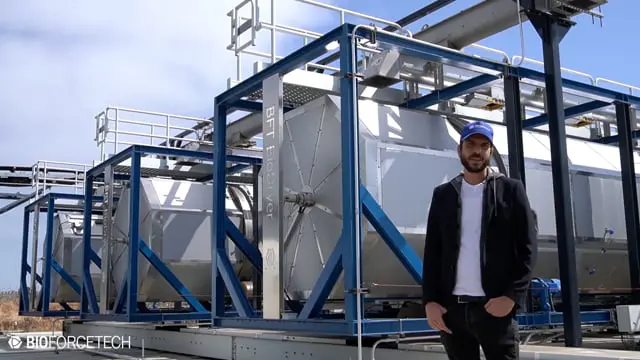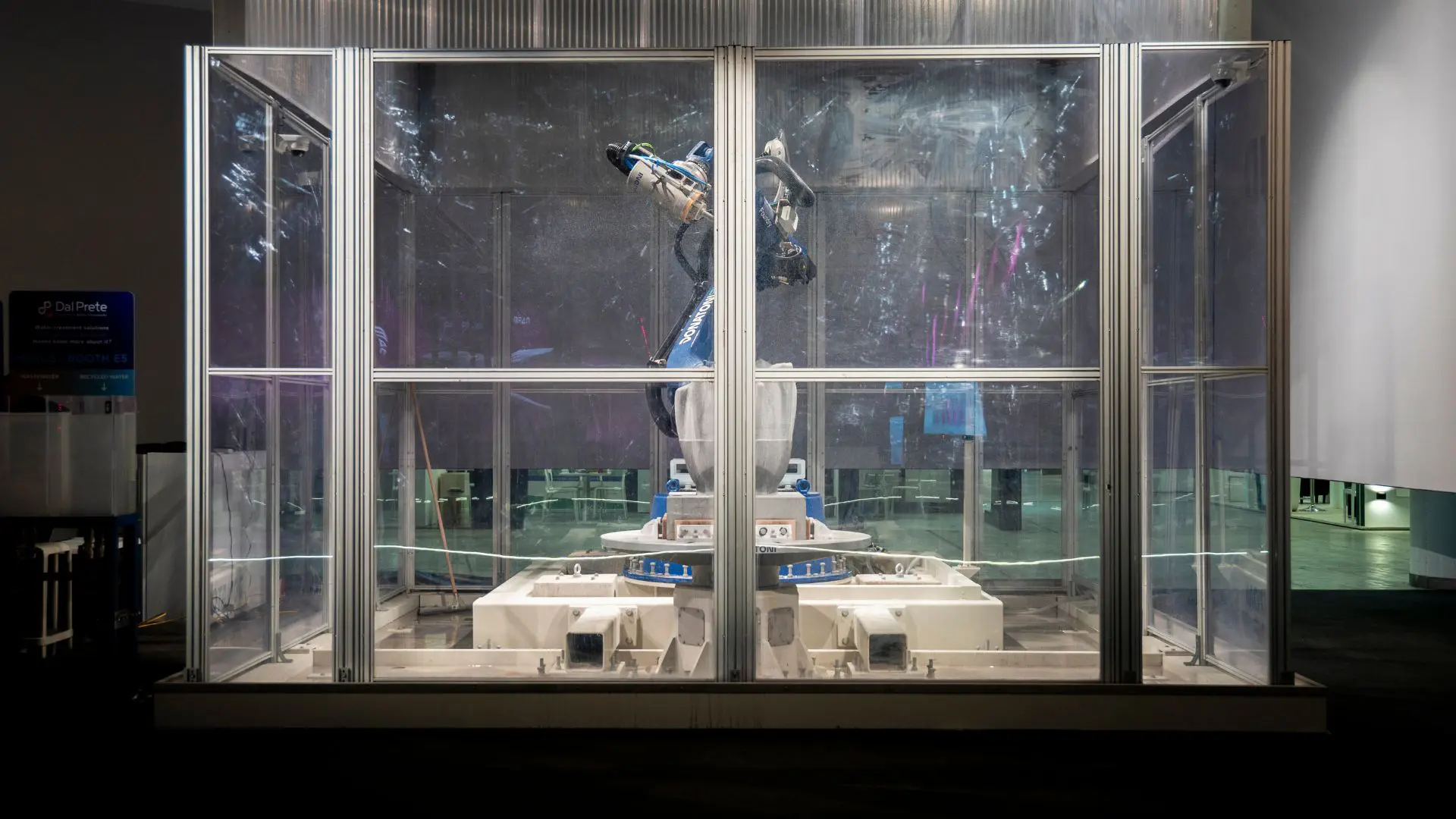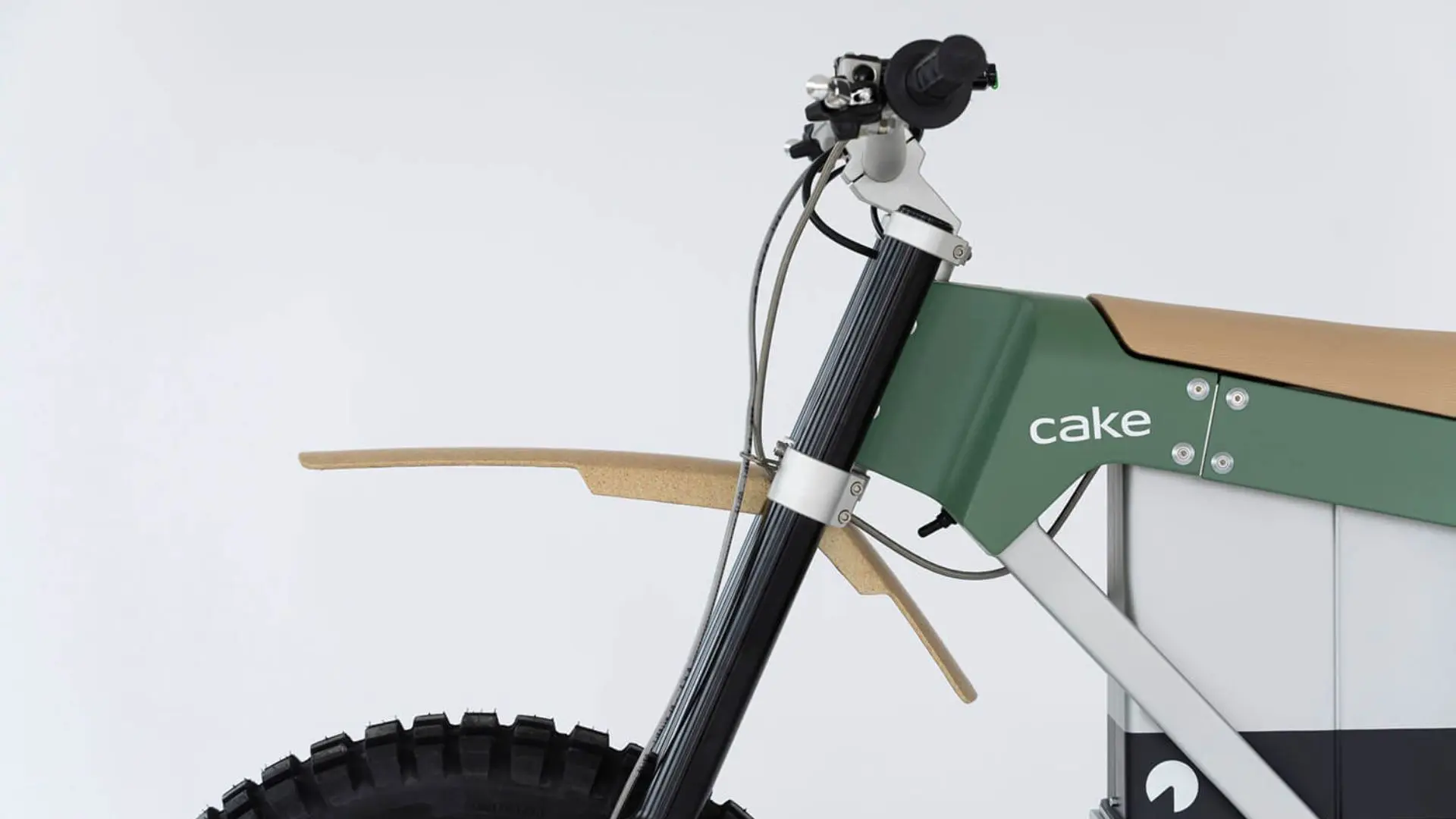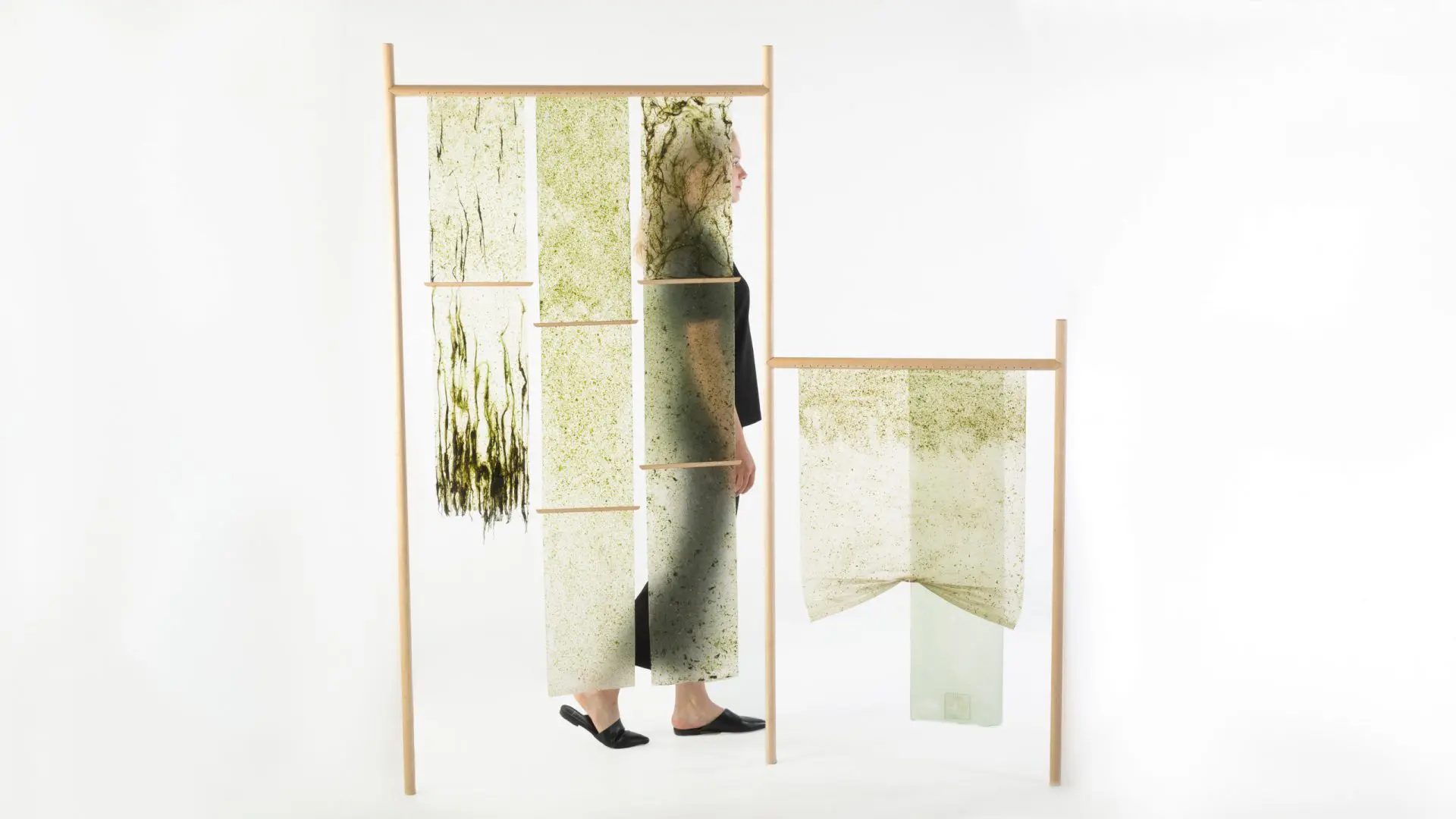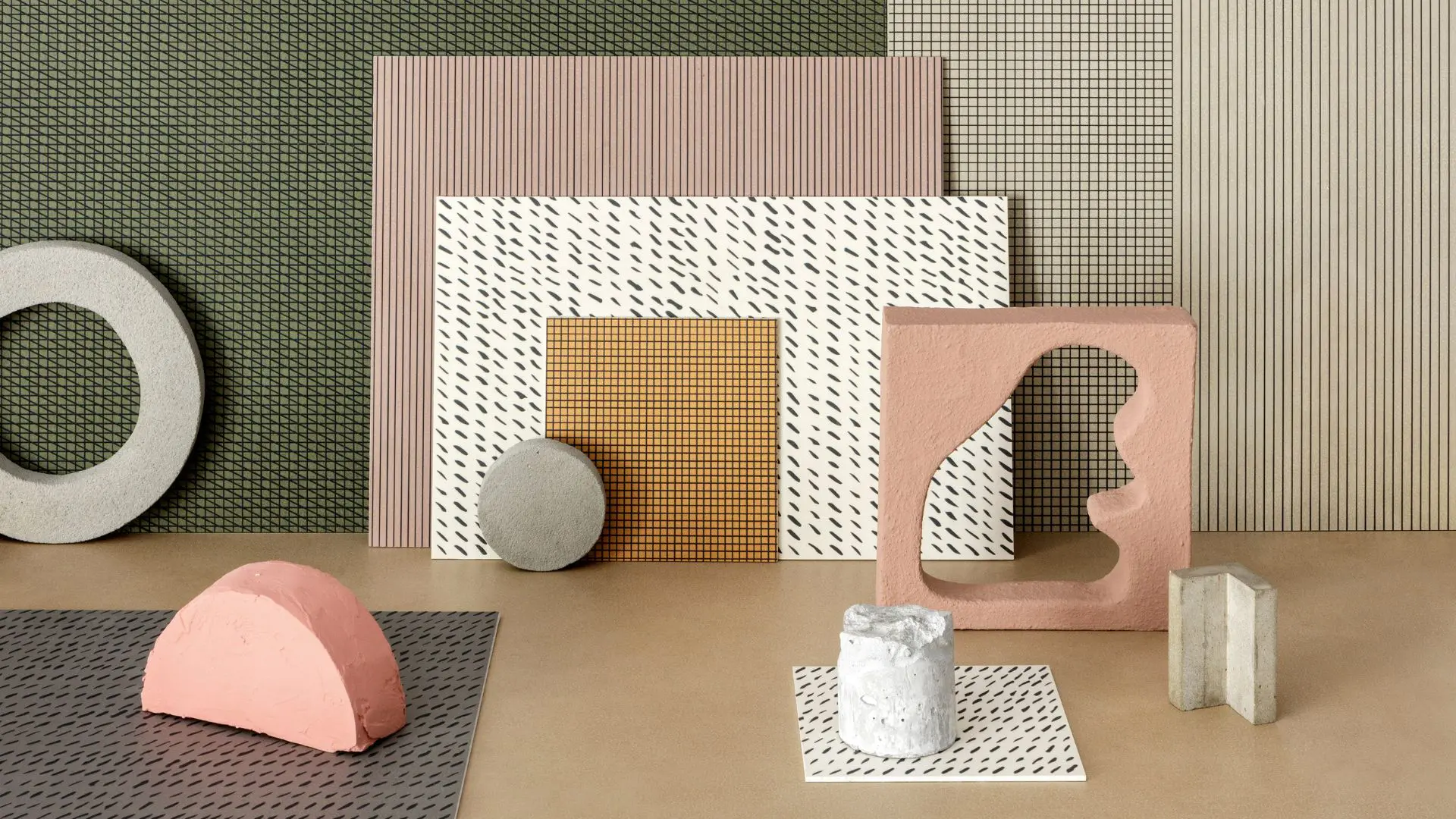This is how OurCarbon turns sewage sludge into a carbon-negative material
Bioforcetech has found an energy-neutral way to transform organic waste into a valuable pigment and material additive
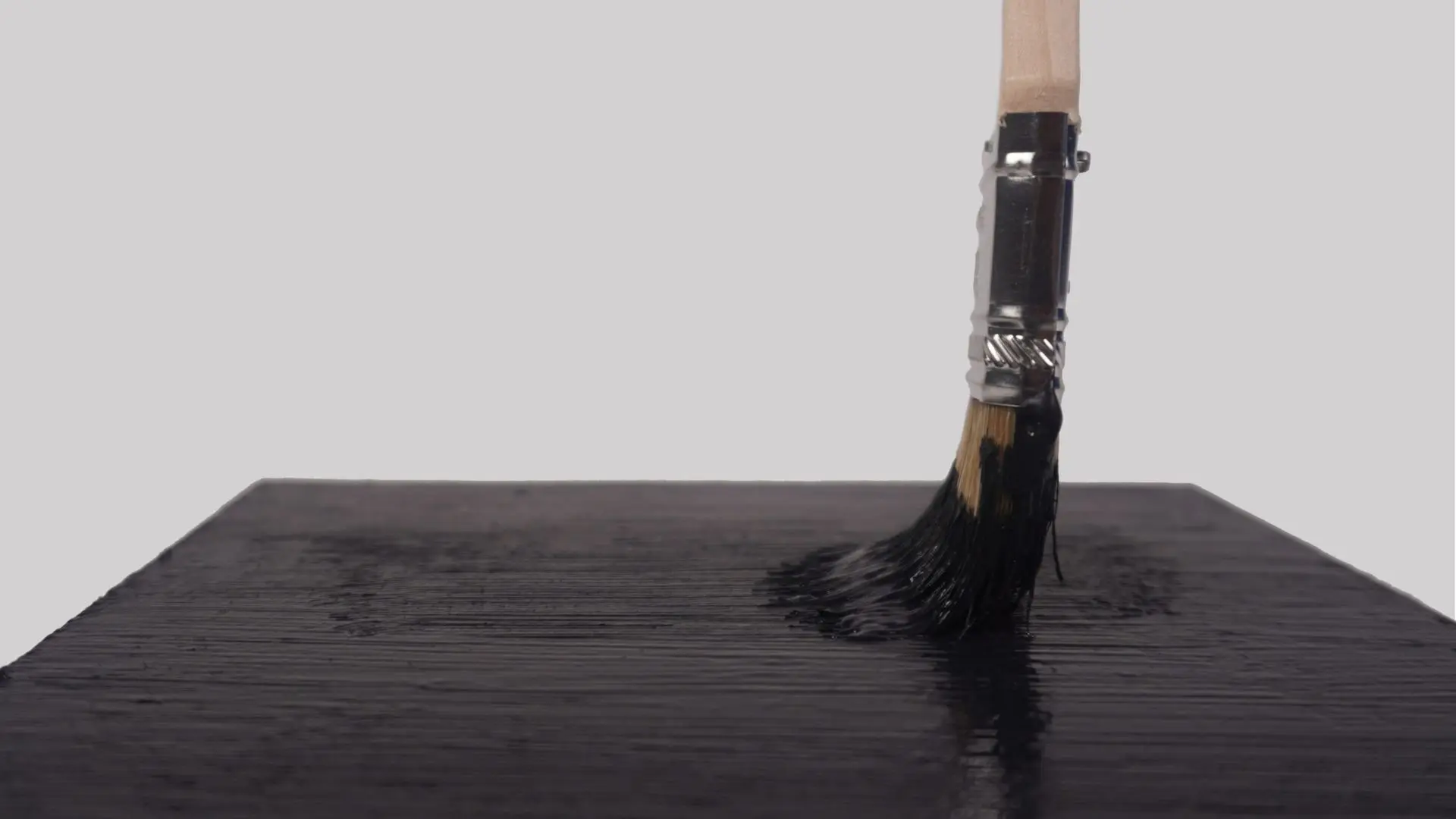
Based in San Francisco and Vimercate (30 minutes north of Milan, Italy), Bioforcetech has developed a material created from sewage sludge and food waste. Called OurCarbon, it proposes a replacement to fuel-intensive materials including concrete aggregates and resin, as well as colourants for materials such as glass or resin.
Debuted during Dutch Design Week, Bioforcetech showcased the material’s potential in an exhibition titled ‘What a Waste.’ It included a series of possible applications including a fine aggregate in concrete replaced by OurCarbon.

The process behind OurCarbon
OurCarbon is created through a three step process: Divert, Transform, Apply. First, organic waste is diverted from environmentally harmful disposal sites such as landfills where organics break down in oxygen-free environments, which is not good for the planet. Also known as ‘anaerobic environments,’ these conditions cause the organics to release methane, a greenhouse gas over 20x more powerful than CO2 in its ability to warm the planet. Diverting organics from this end disposal prevents these emissions.
Next, Bioforcetech transforms the diverted organics, in this case a mix of sewage sludge, known as biosolids, and food waste, into OurCarbon. First, the organics are dried using Bioforcetech’s BioDryer, a proprietary technology that uses heat-producing microbes to evaporate the water in the biosolids with little to no external energy.
“Rather than use external energy like fossil fuels, we leverage bacteria to create heat. The BioDryer passes warm air to cultivate thermophilic bacteria, bacteria that thrive in hot environments.” explains Garrett Benisch, Director of Design Development at Bioforcetech.
“As these bacteria grow and multiply, they release heat energy that evaporates the water around them and dries the organics. In the end, when there is not enough water for the bacteria to continue to flourish, we introduce heat energy from the second step of our process to finish the job.”
[ Read also This biobased house is made from over 100 sustainable materials ]

The biosolids that Bioforcetech receives is known as ‘biosolids cake’ for its wet and muddy consistency. But once the excess water has been removed in the BioDryer, a dry product is left over that is much easier to manage. In the final step of the process, these biosolids undergo pyrolysis, a thermochemical decomposition of organic material through the application of heat without the addition of extra oxygen, which transforms the organics into biochar.
“Organics like biosolids are carbon-based, which is why they normally break down and bond to oxygen, creating CO2 which in turn warms the planet,” explains Benisch. “When you heat these organics without oxygen, something completely different happens. Almost all of the carbon cannot bond to anything in the reactor of our P-Series Pyrolysis, causing it to bond to itself in strong carbon bonds.”
“During this process, the carbon in the organics is fixed in place for thousands of years, never to emit as greenhouse gas. The other small amount of carbon molecules left bond to the hydrogen present in the reactor chamber, forming a burnable gas called ‘syngas’ that we utilize to power the system.”
“The whole system can run on the energy it creates indefinitely, and any excess heat that the P-Series unit produces is sent back to the BioDryers to make them even more efficient. The only output is clean, carbon-fixed OurCarbon.”
By combusting the syngas right away and sending the heat to circulate around the chamber, flames never make direct contact with the biosolids.
“We are able to precisely adjust the materials’ residence time, pyrolysis temperature and syngas combustion to control the process and produce a consistent and clean material.”
“It’s this precision that allows us to apply OurCarbon to applications where other biochars do not make the grade, like pigmentation, concrete additives, and more. If we had a material that was still partly raw biosolids, or that could combust by accident, we would never be able to apply it to something like a screenprinting ink for clothing.”

The material and its applications
The final step to Bioforcetech’s sustainable material stream is to Apply OurCarbon. OurCarbon can be applied within the industry in ways that maximize the material’s benefits while replacing fossil fuel-intensive equivalents, as seen at Bioforcetech’s exhibition during Dutch Design Week.
As part of ‘What a Waste.’, the new locked carbon material is utilized as a pigment to color paints, 3D print filament, wood stains, and screen printing ink. OurCarbon was recently added to a new 80% bio-based screen printing ink by Virus Inks that is commercially available.
“As a material additive, OurCarbon has also been used in a bio-based resin, concrete, and also porcelain,” says Benisch. “They replace carbon-intensive equivalents like carbon black pigment, mined and shipped concrete aggregates, harmful azo dyes used by the fashion industry, or synthetic fertilizers.”

The potential here is huge. According to Bioforcetech, for every ton of OurCarbon produced from biosolids that have been diverted from landfills, they prevent 10 tons of CO2e from entering the atmosphere. That’s about the same as taking two cars off the road for an entire year.
What this idea really depends on is an adjustment in behaviour when it comes to disposal of organic waste and/or widespread infrastructure to make its collection a simple and easy process.
[ Read also Karim Rashid forms “blobject” lighting from plant-based polymers for Gantri ]


